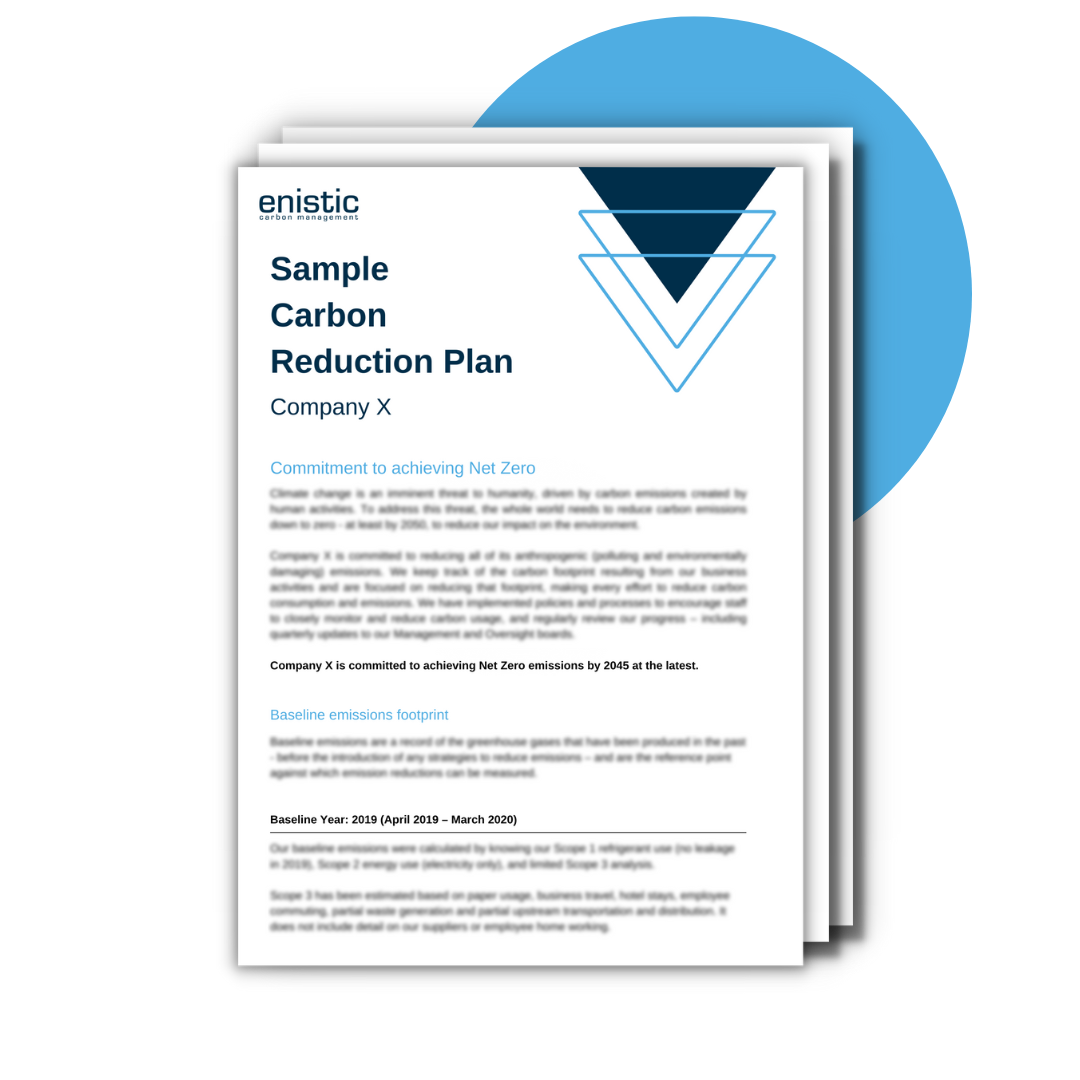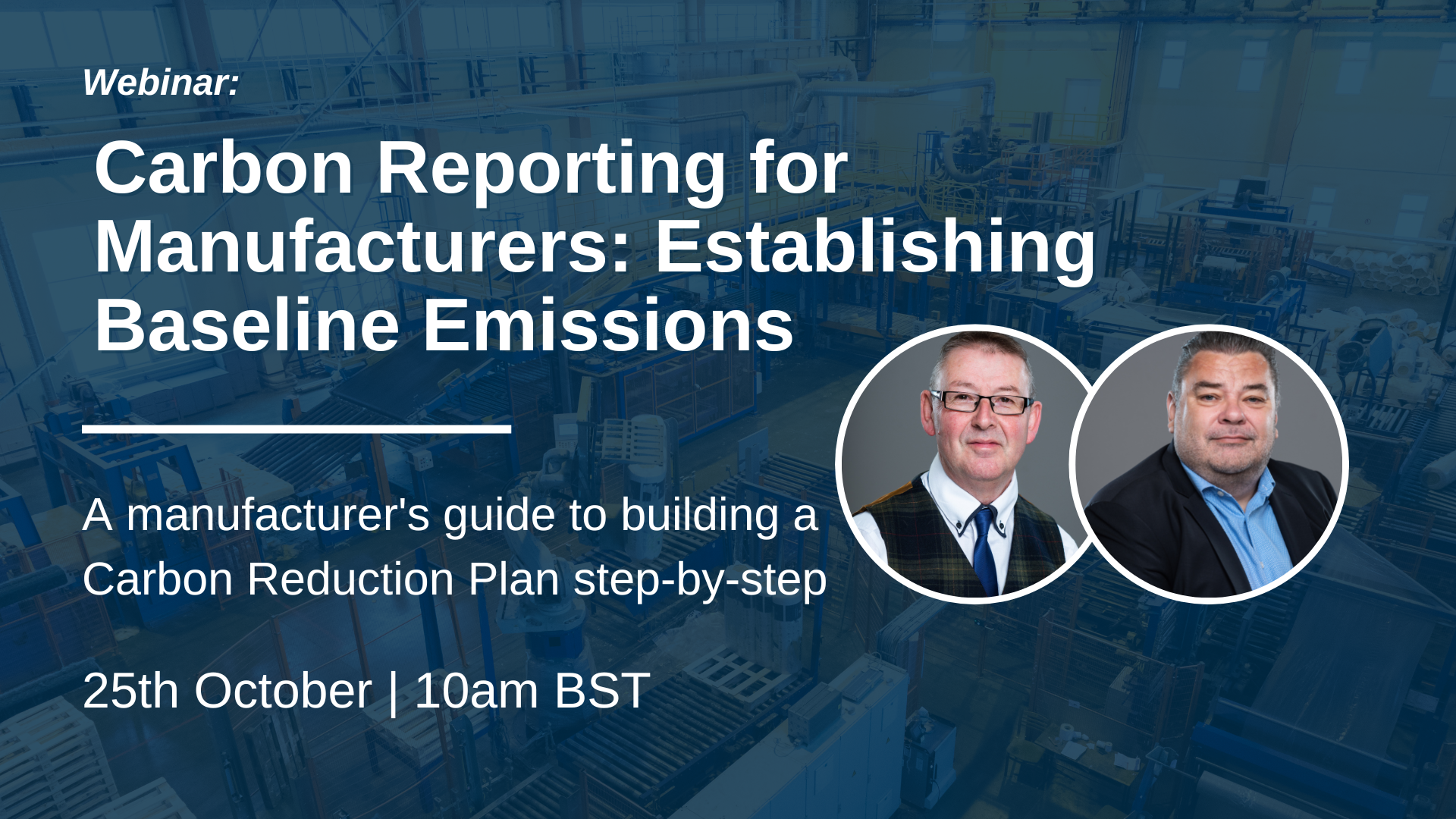As a high-emissions sector, manufacturing faces more complex challenges and bigger obstacles to reaching its Net Zero goals.
Manufacturing industries have already been making strides to reduce greenhouse gas (GHG) emissions. Despite an increase in output of 10% between 2009 and 2019, UK manufacturing emissions have declined by an impressive 57% in the same period. However, building on this progress will require more radical changes.
Costly, complex technologies are needed to successfully reduce the remaining harder emissions, and these methods are still in the early phases of development. Meanwhile, sustainable practices in business are increasingly becoming a priority for investors, customers, suppliers and employees alike. This is not just because of the damaging effects of climate change on all areas of life, but also because of the UK government’s legal commitment to achieve Net Zero by 2050.
Larry Fink, CEO of Blackrock, exemplifies this change in perspective for investors. In his open letter to CEOs, Fink made the statement last year that ‘climate risk is investment risk’. Fink stressed that if companies are to avoid the risks of divestment, they must evolve and innovate to move past this crisis stage with low-carbon future technologies and energy-resilient strategies.
The Science-Based Targets (SBT) framework, TCFD, and other standards provide frameworks and guidance to move toward better business resilience – but urgent action is required now.
Market trends challenging the sector
We are living in unpredictable times. The UK is facing an energy crisis, a cost-of-living crisis, and potentially a recession on the horizon. For high energy users especially, controlling costs and ensuring long-term energy independence is of critical importance. As energy supply moves away from the National Grid and legislation forces companies to move away from fossil fuels, heavy emitters who act now will future-proof their business operations against further energy shocks in the years ahead.

In the public sector, we saw governments make market-shifting announcements such as the UK Finance Minister saying that all LSE-listed companies, as well as financial institutions, must now publish a net zero target, as well as a clear roadmap for how to achieve that target, starting as of next year.
In addition to these current trends – heavy-emitting companies have to deal with ‘always on’ issues in their sectors such as long-lived assets, which provide economic benefit over a future period of time, which means retiring a plant for more low-carbon infrastructure would incur huge initial costs. The limited supply of low-carbon materials relative to widely produced carbon-intensive materials makes it challenging for companies to adopt these alternatives without being undercut on price. Whatsmore, thin profit margins also make it harder to fund the large upfront investments that are likely to be required for low carbon technologies.
Net zero is the destination but how do we get there?
The road to Net Zero will be tricky to navigate, especially as there is not one universally agreed definition of what it actually means. That’s why setting Science Based Targets is so valuable, as they give a guide based on climate science which makes setting carbon reduction initiatives more straightforward.
Since its inception, the Science Based Targets initiative has emerged as the gold standard when it comes to corporate climate target setting. Investors and corporate customers expect this level of commitment to making robust targets.
In October 2021 the Science-Based Targets initiative introduced the Net Zero Standard which would enable a company to have net zero target officially validated and approved.
If you want to find out more about how manufacturers can set SBTs, read our article about just that.
Once you have set your SBTs, a useful next step is to make a Carbon Reduction Plan. This involves measuring your emissions from a baseline year and comparing emissions from years to come against them. Each year you can monitor your emissions by keeping track of your data, enabling you to use carbon reduction projects to reduce your carbon and keep you on track with your goals. Join our webinar on Carbon Reduction Plans coming up on the 25th of October (or if you’re reading this after October, click the link anyway to watch on demand!).
The challenge of balancing ambition and achievability
This challenge will boil down to your stakeholders and their input into the process of setting your targets and net zero roadmap.
Ambition
As we already know, sustainability is a major priority for many businesses. Being able to communicate the benefits of reducing emissions to key stakeholders is important. Not only is measuring your emissions a good thing for your investors, clients, and customers as you align your priorities with their needs, but it also protects your business from climate-related disruption. Here are some facts that will help you communicate the benefits of taking action:
- 73% of investors believe efforts to help improve the environment contribute to return
- Effective sustainability reporting can increase market value by 4-6%
- Sustainability reporting can be responsible for 40% of a company’s reputation
Achievable
Operations teams should consider what technologies can be adopted that offer production benefits such as improved quality, reliability, and efficiency – these variables are critical for your business to continue being profitable on the road to net zero. The benefits of carbon management might be obvious, even mandatory in some cases, but offering solutions to decision-makers could help kickstart company action.
The security of your energy supply should also be regularly reviewed and questioned, especially if the supply is price sensitive. This is just scratching the surface of what a business needs to consider when implementing an energy strategy to align to net zero. There will be many other factors based on the culture of your business and the things that matter to your sustainability and operational team.
Science-based targets and the Net Zero Standard: Helping steer you to net zero
In summary, science-based corporate net zero targets will require:
- Emissions reductions in line with a global temperature increase of 1.5°C before 2050 across Scopes 1, 2 and 3
- Near-term targets and rapid action to reduce emissions over 5-10 years in line with 1.5°C (previously known as science-based targets)
- Long-term targets of ~90% across all Scopes before 2050
- A limited dependance on carbon removals to neutralize emissions that cannot yet be eliminated (5-10%)
- External verification of corporate net zero targets and annual progress reporting
Why was the Standard introduced?
- Lack of consistency around net zero has caused scepticism
- Reduce risk of greenwashing
- Provide a standardised approach to net zero
- Confidence that your net zero strategy is consistent with limiting warming to 1.5C
- Decarbonisation needs to be the priority
- Recognises that there is a limit to the amount of carbon that can be removed
Actions to take away
- Although manufacturing has a steep hill to climb to reach Net Zero compared to other industries, setting SBTs and monitoring emissions as part of a Carbon Reduction Plan is the most effective way to reduce emissions
- Plan effective carbon reduction initiatives. Whilst the necessary technology may not be available or affordable yet, HERE LINK are ways you can act now.
The challenge of balancing ambition and achievability
This challenge will boil down to your stakeholders and their input into the process of setting your targets and net zero roadmap.
Ambition
As we already know, sustainability is a major priority for many businesses. Being able to communicate the benefits of reducing emissions to key stakeholders is important. Not only is measuring your emissions a good thing for your investors, clients, and customers as you align your priorities with their needs, but it also protects your business from climate-related disruption. Here are some facts that will help you communicate the benefits of taking action:
- 73% of investors believe efforts to help improve the environment contribute to return
- Effective sustainability reporting can increase market value by 4-6%
- Sustainability reporting can be responsible for 40% of a company’s reputation
Achievable
Operations teams should consider what technologies can be adopted that offer production benefits such as improved quality, reliability, and efficiency – these variables are critical for your business to continue being profitable on the road to net zero. The benefits of carbon management might be obvious, even mandatory in some cases, but offering solutions to decision-makers could help kickstart company action.
The security of your energy supply should also be regularly reviewed and questioned, especially if the supply is price sensitive. This is just scratching the surface of what a business needs to consider when implementing an energy strategy to align to net zero. There will be many other factors based on the culture of your business and the things that matter to your sustainability and operational team.
Science-based targets and the Net Zero Standard: Helping steer you to net zero
In summary, science-based corporate net zero targets will require:
- Emissions reductions in line with a global temperature increase of 1.5°C before 2050 across Scopes 1, 2 and 3
- Near-term targets and rapid action to reduce emissions over 5-10 years in line with 1.5°C (previously known as science-based targets)
- Long-term targets of ~90% across all Scopes before 2050
- A limited dependance on carbon removals to neutralize emissions that cannot yet be eliminated (5-10%)
- External verification of corporate net zero targets and annual progress reporting
Why was the Standard introduced?
- Lack of consistency around net zero has caused scepticism
- Reduce risk of greenwashing
- Provide a standardised approach to net zero
- Confidence that your net zero strategy is consistent with limiting warming to 1.5C
- Decarbonisation needs to be the priority
- Recognises that there is a limit to the amount of carbon that can be removed
Actions to take away
- Although manufacturing has a steep hill to climb to reach Net Zero compared to other industries, setting SBTs and monitoring emissions as part of a Carbon Reduction Plan is the most effective way to reduce emissions
- Plan effective carbon reduction initiatives. Whilst the necessary technology may not be available or affordable yet, here are ways manufacturers can act now.
Sample Carbon Reduction Plan

Download our sample Carbon Reduction Plan
The Enistic Platform

Our cloud-based carbon management platform pulls together your carbon data into one, easy-to-access place. Intuitive dashboards help you to visualise key metrics, and monitor performance at a glance. The built in analytics suite enables you to create customisable reports that can be exported and shared with your organisation. Download reports and share your carbon data and progress easily.
• Live Carbon Footprint
• Track & report your progress to stakeholders
• Up-to-date carbon conversion factors
•Analyse and compare individual sites
•Automatic data upload
•Downloadable and customisable reports for PPN 06/21
Book a free consultation
Contact one of our Net-Zero experts today and book a free consultation to see how Enistic can help you set your Net Zero strategy. We will make the processing time and cost-effective. ensuring you move forward, informed, empowered, and confident that you have control.





